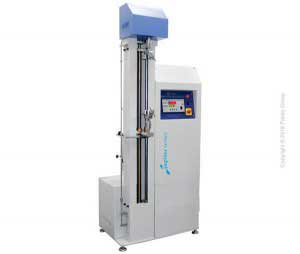Rubbers are used in construction materials, industrial parts and housewares due to its best mechanical properties flexibility and elasticity. A wide range of synthetic rubbers and fibers with different mechanical properties are used to match the applications of the different production process. With the wide usage of rubbers, measuring its mechanical properties is extremely important that helps to measure the quality of the products and helps in new product development.
Measurement of Rubber Quality via Tensile Test
To perform the tensile test, rubbers are firstly shaped into dumbbell shape sample and tightly gripped in the provided clamps. After placing the sample, required amount of elongation force is exerted on the material. This elongates the material and decreases the thickness of the material. In the tensile testing machine, there is no automatic tightening mechanism to clamp the sample. Once the sample is elongated with a specific amount of force the sample gets ruptured and device provides the maximum tension force that a sample can bear to its maximum. To test the tension strength of rubbers, pneumatic grippers, roller type grips, plier grips, vice type grips are used to ensure the accuracy of test results.
Presto Stantest manufactures and supplies a wide range of tensile testing machines for different production verticals to test the tension strength of different products. The instruments are designed with different specifications and different types of grippers to fulfill the test requirement of different applications.
Technical Specifications of Presto’s Tensile Testing Machine
The instrument is designed with the capacity of 0-2500 Kgf with maximum 3 phase induction motor that helps to perform heavy tests on metals easily and quickly. Different features such as Led display, digital display, and the computerized display is provided as per customer’s request in different models. The instrument Is designed as per various standard test methods that are introduced by standardization authorities such as ASTM D412 -06a, ASTM D638, ASTM D76 and many more.
